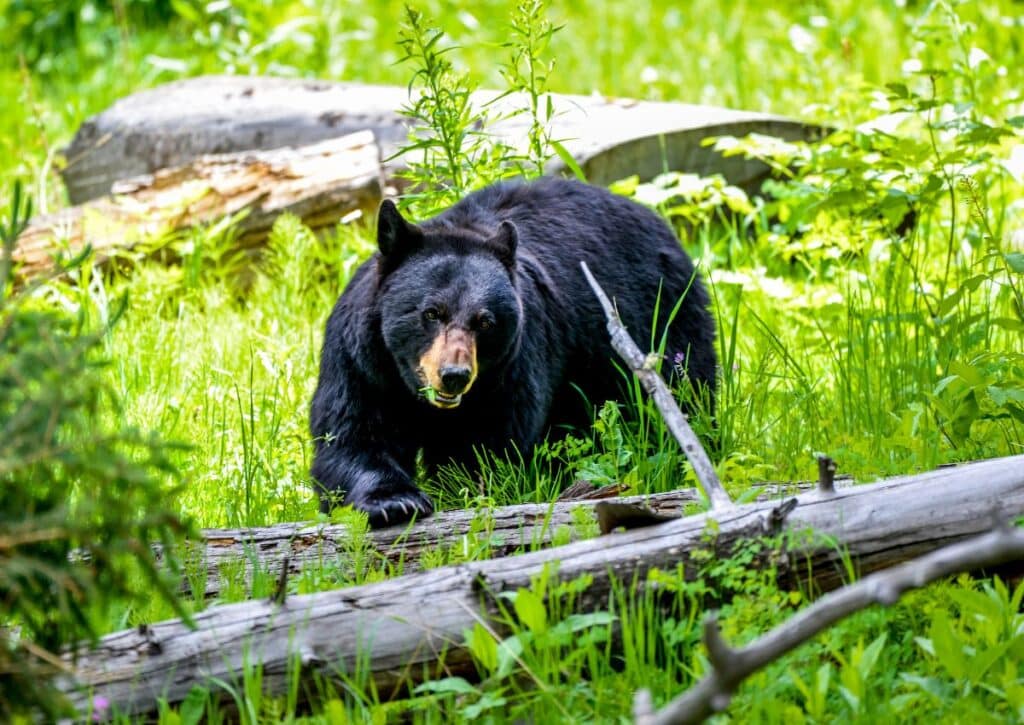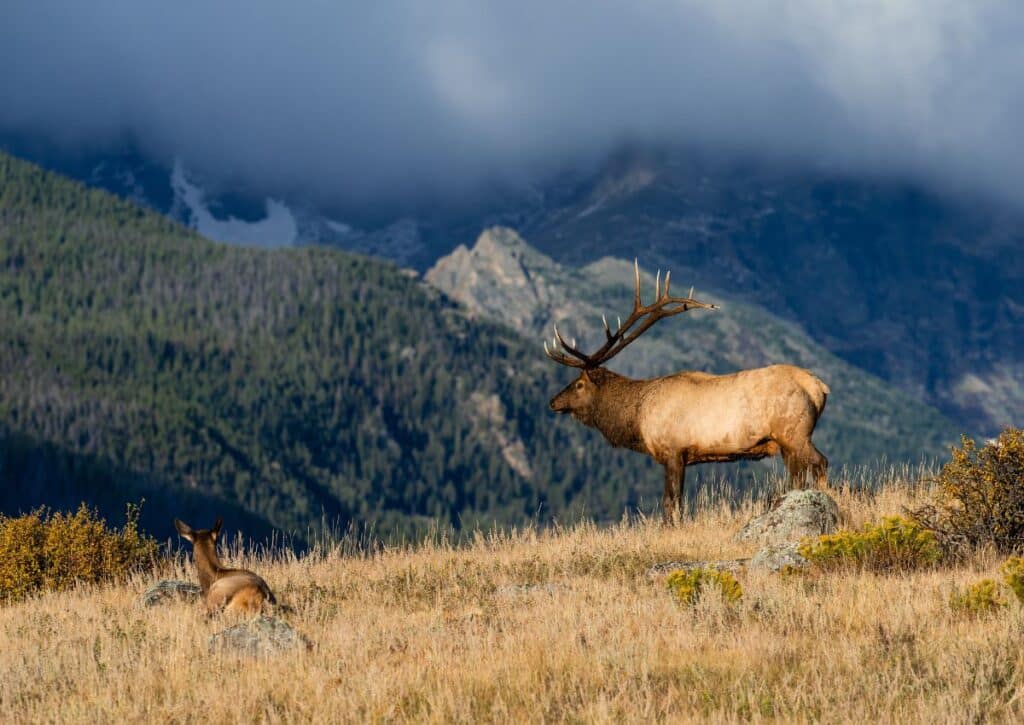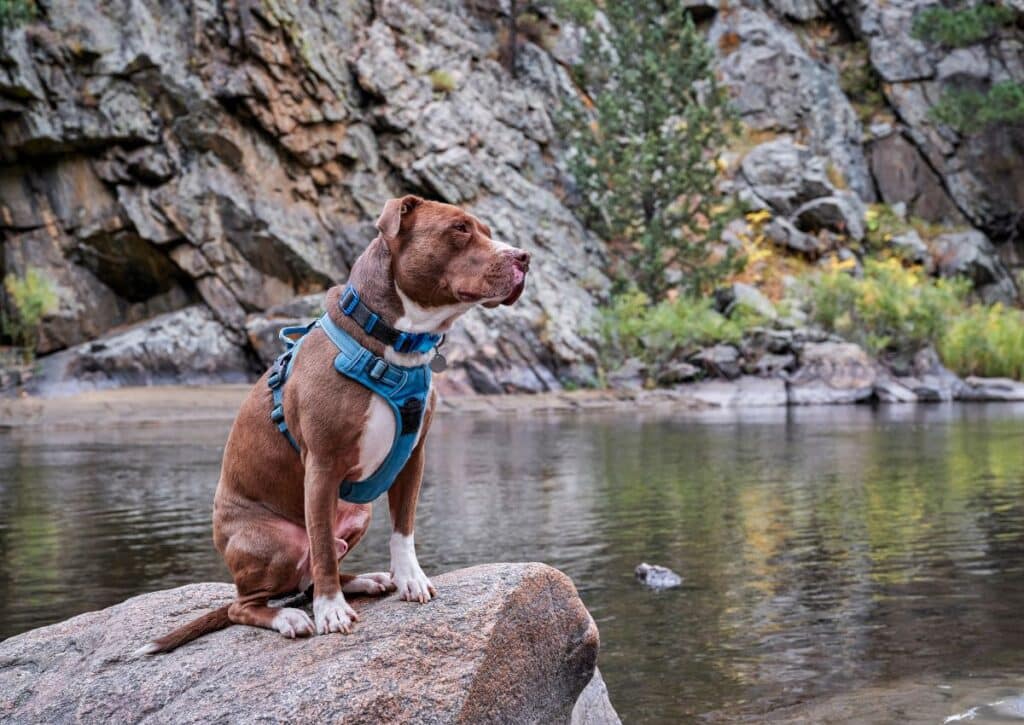Discover the presence of bears in Arapaho National Forest, their habitats, and safety tips for encounters.
Yes, Arapaho National Forest is home to bears, specifically the black bear. These majestic creatures are often spotted in areas like the Byers Peak Wilderness and the Vasquez Peak Wilderness. For those exploring the forest’s trails, the Monarch Lake Loop and the Devil’s Thumb Trail are known spots for potential bear sightings. Notably, there’s been an increase in sightings in recent years, suggesting a growing bear population in the forest
Whether you’re an avid hiker or someone simply looking to experience nature, Arapaho provides a unique opportunity to witness wildlife in its natural setting. Let’s journey together into the heart of this forest and uncover the stories of its most iconic residents.
Understanding the Black Bear in Arapaho
The Arapaho National Forest, with its vast landscapes and diverse ecosystems, is a sanctuary for many wildlife species. Among its residents, the black bear stands out, not just for its size but also for its significant role in the forest’s ecology.
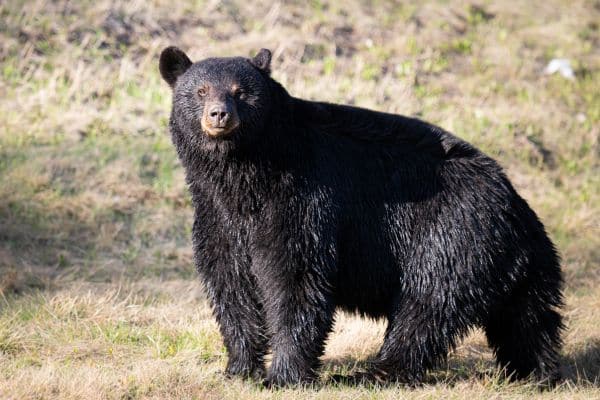
To truly appreciate these creatures and their habitat in Arapaho, it’s essential to delve into their characteristics, behavior, and preferred locales within the forest.
Physical Characteristics of the Black Bear
The black bear, scientifically known as Ursus americanus, is the smallest of the three bear species found in North America, but it’s by no means diminutive.
Adult males typically weigh between 210 to 315 pounds, while females are slightly smaller, averaging between 135 to 180 pounds. However, depending on food availability, some males can reach weights exceeding 600 pounds.
In terms of appearance, black bears have a robust and compact body with a short tail. Their snout is straight, and their eyes are small, giving them a distinctive profile. While they are called “black” bears, their fur color can vary. Most are indeed black or dark brown, but some can be cinnamon, brown, or even blonde. This color variation is more about genetics and less about environment.
Behavior of the Black Bear
Black bears are solitary creatures, with males and females generally coming together only during the mating season in early summer. They are primarily nocturnal, although it’s not uncommon to spot them during daylight hours, especially in less disturbed areas of the forest.
One of the most fascinating behaviors of black bears is hibernation. In Arapaho, as winter approaches and food becomes scarce, black bears retreat to their dens—often a cave, hollow tree, or a burrow.
Here, they’ll remain dormant for several months, living off their fat reserves. During this period, they don’t eat, drink, urinate, or defecate. Come spring, they emerge leaner and in search of food.
Black bears are opportunistic feeders. While they have a preference for berries, nuts, and plants, they also consume insects, fish, and small mammals. Occasionally, they might prey on larger mammals or scavenge carcasses. Their diet varies with the seasons and the availability of food sources.
Habitats within Arapaho National Forest
The Arapaho National Forest offers a variety of habitats that cater to the black bear’s needs. Dense forests with undergrowth provide both food and cover. Proximity to streams or lakes ensures a steady water source, and remote, rugged terrains offer safe denning sites.
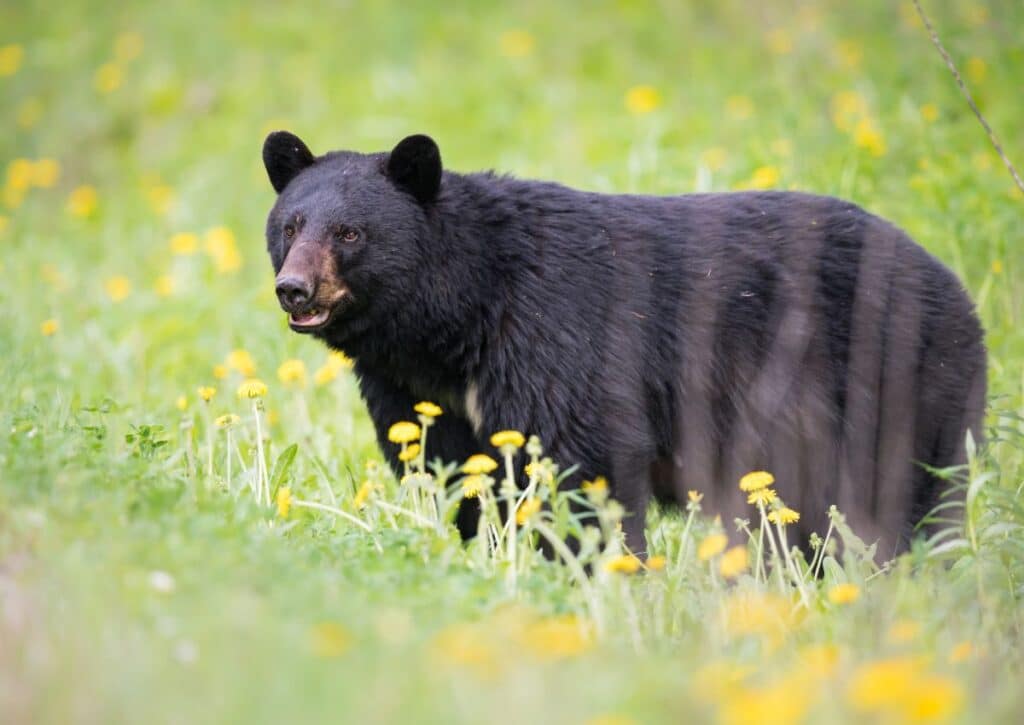
Two prominent areas within Arapaho where black bears are commonly sighted are the Byers Peak Wilderness and the Vasquez Peak Wilderness.
These areas, with their mix of dense woods and open meadows, offer an ideal habitat. The Monarch Lake Loop and the Devil’s Thumb Trail are trails where hikers often report bear sightings, especially during dawn or dusk.
The black bear is more than just a symbol of wild America. In Arapaho National Forest, it’s a living testament to the wilderness’s health and vitality.
Understanding these creatures, their habits, and their habitats not only enriches our experience as visitors but also underscores the importance of conservation efforts to protect these magnificent animals and the pristine landscapes they call home.
Trails and Campgrounds to See Bears in Arapaho National Forest
Arapaho National Forest is a haven for outdoor enthusiasts, offering a myriad of trails and campgrounds that immerse visitors in its natural beauty. For those hoping to catch a glimpse of the forest’s iconic black bear, certain areas are particularly renowned for their bear activity. Here’s a detailed look at some of these trails and campgrounds.
Trails Known for Bear Sightings
Monarch Lake Loop
Spanning approximately 4 miles in a round trip with a gentle elevation gain of 150 feet, the Monarch Lake Loop offers hikers a leisurely journey around the serene Monarch Lake.
As you traverse this well-trodden path, you’re treated to panoramic views of the Indian Peaks Wilderness Area. Along the way, interpretive signs provide insights into the area’s rich ecology.
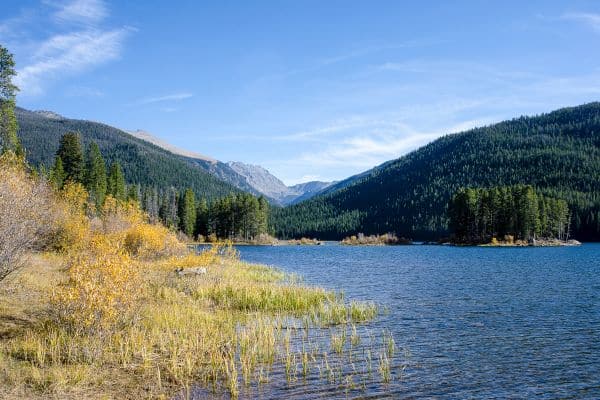
The trail is especially picturesque in late summer, dotted with wildflowers and berry bushes. Over the past year, there have been 12 reported bear sightings, particularly near the berry-rich sections during August and September.
Devil’s Thumb Trail
This trail is not for the faint-hearted. Stretching roughly 13 miles round trip, it challenges hikers with an elevation gain of 2,400 feet.
However, the rewards are unparalleled, with unmatched views from the Continental Divide and a journey that takes you through dense forests, across alpine meadows, and over rocky terrains.
The varied landscape and abundance of natural food sources make this trail a hotspot for bear activity. In the last hiking season alone, 18 bear sightings were reported, predominantly in the forested sections and near the water streams.
Junco Lake Trailhead to Columbine Lake
Starting from the Junco Lake Trailhead, this trail spans about 7 miles round trip and has an elevation gain of 1,200 feet. It offers hikers a delightful mix of forested paths and open meadows, culminating at the picturesque Columbine Lake.
The serene setting and the proximity to water make it a frequented spot for bears. Last year, 15 bear sightings were documented, with most encounters occurring during dawn or dusk near the lake’s periphery.
Campgrounds Known for Bear Activity:
Guanella Pass Campground
Offering 18 individual sites suitable for tents and small RVs, this campground is a nature lover’s dream. Nestled near Georgetown and enveloped by a dense canopy of spruce and pine trees, campers can truly immerse themselves in the wilderness.
Essential amenities like picnic tables, fire grates, and vault toilets ensure a comfortable stay. However, the true wilderness experience is evident in the bear activity.
Last camping season, there were 10 reported bear visits, primarily attracted by unsecured food items.
Sugarloaf Campground
With 15 sites tailored for tents and trailers, Sugarloaf Campground provides a tranquil setting adjacent to the South Fork Clear Creek.
The gentle murmur of the creek, combined with the shade provided by tall trees, makes for a peaceful retreat. Campers have access to drinking water, picnic tables, fire rings, and restrooms.
The proximity to the creek and the early morning tranquility have led to 8 bear encounters over the past year, with bears often seen foraging along the creek’s edge.
St. Louis Creek Campground
Located near Fraser, this campground boasts 25 sites that can accommodate both tents and RVs.
It’s a gateway to several trailheads and is surrounded by lodgepole pine forests, providing a serene backdrop for campers. Amenities include drinking water, picnic areas, fire grates, and vault toilets.
The seclusion of this campground and its proximity to food sources make it a hotspot for bear activity. Last season witnessed 12 instances of bear activity, mostly near garbage disposal areas and during nighttime.
Guidelines to Exploring With Bears in Arapaho National Forest
Venturing into the Arapaho National Forest is an experience of a lifetime, especially with the possibility of encountering its majestic resident, the black bear. To ensure that your exploration is both safe and respectful to the wildlife, consider the following 12 tips:
- Bear Awareness: Before heading out, familiarize yourself with bear behavior and signs of their presence, such as tracks, scat, or markings on trees.
- Avoid Dawn and Dusk: Bears are most active during these times. If possible, plan your hikes and activities outside of these hours.
- Make Noise: When hiking, periodically make noise – whether it’s talking, singing, or clapping. This alerts bears to your presence, reducing the chance of a surprise encounter.
- Travel in Groups: Bears are less likely to approach larger groups of people. If possible, hike with others.
- Secure Your Food: When camping, store food in bear-proof containers or hang it at least 10 feet off the ground and 4 feet away from any tree trunk.
- Maintain a Safe Distance: If you spot a bear, keep at least 100 yards away. Never approach them, even for a photo.
- Avoid Odorous Items: Strong scents can attract bears. Avoid carrying or using scented items like lotions, perfumes, or flavored lip balms.
- Stay on Designated Trails: By sticking to the trails, you reduce the risk of inadvertently stumbling upon a bear or its den.
- Know How to React: If you encounter a bear, speak calmly and firmly while slowly backing away. Avoid direct eye contact, which they might perceive as a threat.
- Carry Bear Spray: As a precaution, carry bear spray and know how to use it. It can deter a bear if it becomes aggressive.
- Respect Closed Areas: Sometimes, areas in the forest are closed due to high bear activity. Always respect these closures for your safety and the well-being of the bears.
- Educate Others: Share your knowledge about bear safety with fellow travelers, ensuring that everyone has a safe and enjoyable experience in Arapaho National Forest.
By following these guidelines, you can explore the breathtaking landscapes of Arapaho National Forest with confidence, ensuring a harmonious coexistence with its wild inhabitants.
Conclusion
Yes, there are bears in Arapaho National Forest, specifically the black bear. These magnificent creatures roam the dense woods, meadows, and trails of the forest, playing a pivotal role in its ecosystem.
Throughout this article, we’ve journeyed through the characteristics and habitats of the black bear, explored the trails and campgrounds where they’re most commonly sighted, and provided essential tips for safely coexisting with them during your adventures in Arapaho.
As you venture into this vast wilderness, armed with knowledge and respect for its inhabitants, you’re set for an unforgettable experience that celebrates the wild heart of Colorado.

